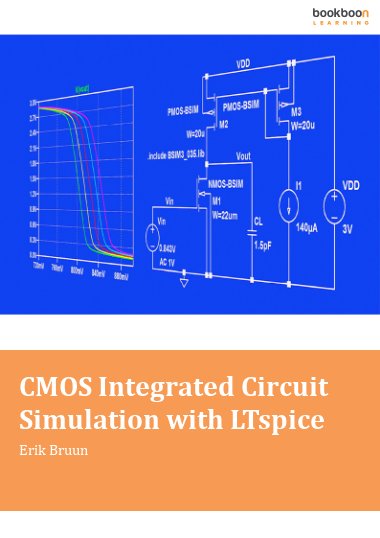- An ideal companion for students following a first course in integrated CMOS design.
- An ideal introduction to circuit simulation for new students in electrical or electronics engineering.
- Organized as a series of tutorials on specific subjects.
- Includes end-of-chapter problems.
- Covers introduction to LTspice for first-year students in electrical and electronics engineering - Tutorials 1 and 2.
- Includes both the classic Shichman-Hodges analytic transistor models and modern BSIM transistor models for circuit simulation - Tutorial 3.
- Deals with the basic CMOS gain stages both using analytical models and using simulation - Tutorial 4.
- Includes an example of the design of a two-stage opamp using a combination of analytical methods and simulation - Tutorial 5.
- Covers simulation of CMOS circuits in process corners and over temperature variations - Tutorial 6.
- Includes several hints and pitfalls specific to LTspice at the end of every tutorial.
- Appendix for the beginner with overviews of components and simulation commands.
- Appendix for the CMOS designer with examples of BSIM CMOS models for use with LTspice.
- Click here to download the exercise book.
Click here to download BSIM CMOS models for use with LTspice.


